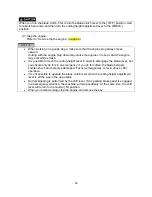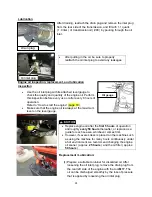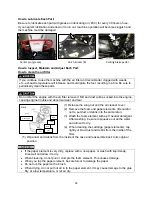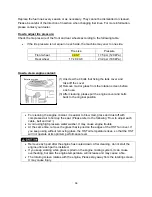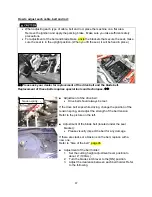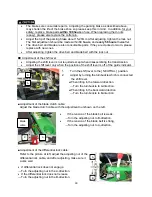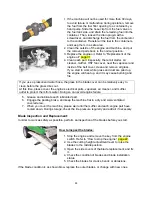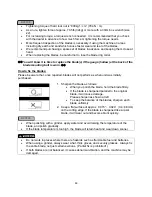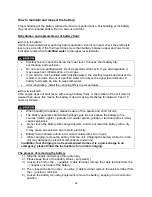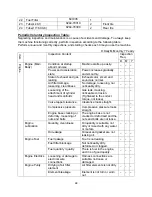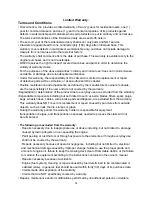
42
New
Change
Blade-stay
Replace blade setting bolt when abrasion reaches the limit of gauge.
If a blade breaks or flies off due to improper mounting of the blade, serious injury may
occur.
How to replace the blades:
If you need to replace the blades (outer blades), refer to the
following instructions:
1. Always use a blade changer as shown above, remove the
blade by loosening the hard lock nut. Remove the top of the
lock nut by using a size 22 box wrench at first, and then
remove the lower nut.
2. When flipping the blades, always replace the mounting bolt
and when replacing the blades replace the other components
as well. If you do not replace them, the blade may get warped,
damaged or cracked, and scatter debris during operation.
3. After replacing with a new blade, tighten the hard lock nut one by one from the bottom
up in order to ensure uniform tightening.
Like blades, the blade stay is a consumable part. Even if you do not see a bend or an
abrasion, exchange the blades every
100 hours
of use or every two years, whichever
comes first.
More frequent inspection of the blades is necessary if using the machine on areas
including dry earth and sand which cause faster wear and tear of the blades.
We recommend purchasing a spare set of the blades in advance and keeping them
close at hand.
Please ask your dealer to do the replacement (charges apply). The nut and bolt kit
and the knife-stay mounting bolt are needed to replace the blades.
When replacing the outer blades, also replace the mounting bolts; when replacing the
blades, replace the mounting bolts and other components (hard lock nut, nut guard,
and blade color) at the same time. Do not substitute nuts and bolts from other
manufacturers.
Two blades (outer blades) must be replaced and exchanged at the same time. Do not
use old and new blades together as this will result in abnormal vibrations.
NOTICE
DANGER
DANGER
0.8 inch
Crack
Crack
Blade changer
Abrasion
Gauge
Abrasion

